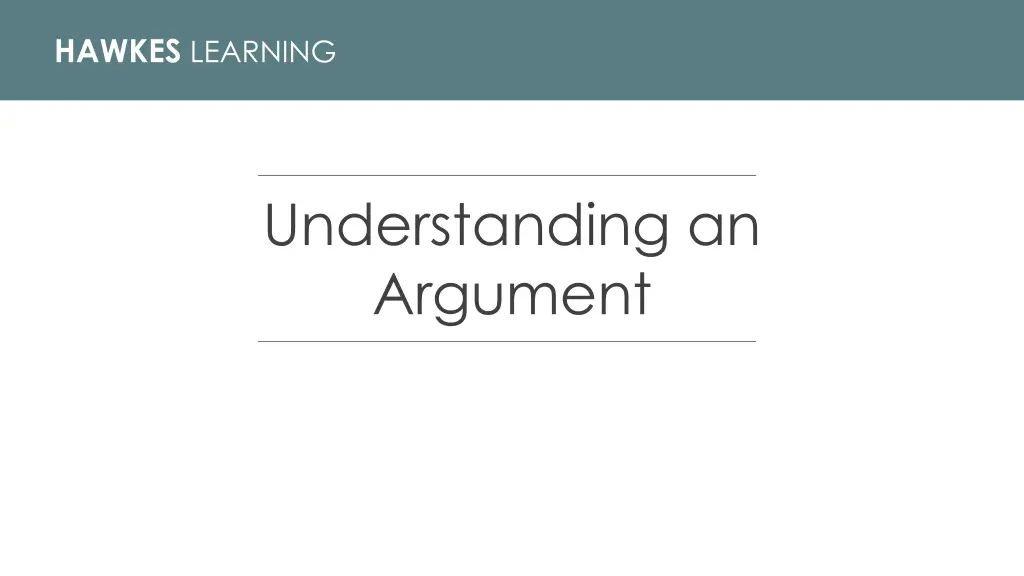
Effective Argument Structure
Learn the essentials of constructing a persuasive argument, including the definition of an argument, the impact of occasion, the importance of evidence, and the role of structure. Enhance your rhetoric and persuasion skills with valuable insights from Hawkes Learning.
Download Presentation

Please find below an Image/Link to download the presentation.
The content on the website is provided AS IS for your information and personal use only. It may not be sold, licensed, or shared on other websites without obtaining consent from the author. If you encounter any issues during the download, it is possible that the publisher has removed the file from their server.
You are allowed to download the files provided on this website for personal or commercial use, subject to the condition that they are used lawfully. All files are the property of their respective owners.
The content on the website is provided AS IS for your information and personal use only. It may not be sold, licensed, or shared on other websites without obtaining consent from the author.
E N D
Presentation Transcript
HAWKES LEARNING Understanding an Argument
Lesson Goals What Is an Argument? Occasion Evidence Structure HAWKES LEARNING
What Is an Argument? Argument: a series of reasons intended to establish and support a point of view Prioritize planning and evidence, not emotion and opinion Arguments are inherently persuasive they aim to influence someone's beliefs or actions HAWKES LEARNING
Occasion Occasion of the argument will affect your purpose and topic Deliberative Forensic Ceremonial Present Future Past HAWKES LEARNING
Evidence The specific information used to support a main idea Example Anecdote Description Expert analysis Fact Reflection Statistic HAWKES LEARNING
Structure Can guide your rhetoric and shape your evidence to create an effective and persuasive argument The Minto Pyramid structure your argument from the top down, breaking up your thesis statement into specific parts that you will address in your argument The Toulmin Model breaks up your argument into six distinct parts (claim, grounds, warrant, backing, qualifier, and rebuttal) to help make sure you are covering all parts of your argument or






















